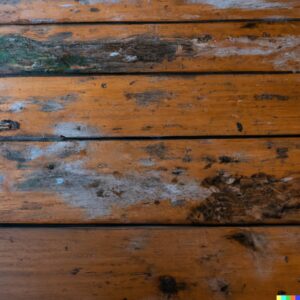Why Do You Need Waterproof Underfloor Insulation – And What Options are Available?
General InsulationInsulating your home is key to cutting down hefty energy bills and improving the comfort of your home. And while most people focus on cavity wall insulation or room in roof insulation, there’s another significant source of draught and heat loss that often doesn’t get the care it deserves—and you’re stepping on it. Around 10-15% of heat is lost through a home’s floor surface.
While some people might opt for underfloor heating systems to warm up the floor surface in colder climates, underfloor insulation is a more convenient solution by significantly reducing heat loss. Plus, underfloor heating systems tend to fetch hefty installation and maintenance costs.
Underfloor insulation is a simple, cost-effective, and effective way to protect your home from the elements. The question is, what’s the best underfloor insulation?
Why is Waterproof Insulation Important?
Floor insulation can prevent heat loss in winter and heat gain in summer, reduce electricity usage, offer acoustic benefits, reduce draughts, cut down your energy bills, and reduce your environmental impact.
But it is important to understand that water can damage floor insulation and negate its effectiveness. Since water is a better conductor of heat than air, damp insulation materials allow heat transfer—leading to poor insulation.
A waterproof insulation material resists water ingress and remains unaffected by water. It increases the structure’s durability and prevents damp or mould formation, allowing you to reap the maximum benefits of insulation.
Common Issues With Underfloor Insulation
Underfloor insulation is an excellent investment with long-term benefits—as long as you do it right. Its effectiveness comes down to three things. First, it should be airtight. Second, the insulation should provide superior thermal performance to minimize heat loss. And third, it should have waterproofing properties to prevent damp formation.
Subpar installation or the use of inefficient insulation materials can lead to the following issues:
- Built-Up Condensation: Using the wrong type of insulation can lead to wind wash and/or interstitial condensation.
- Dampness and Mould: A common issue with underfloor insulation is mould growth due to excess moisture. Some people are sensitive to moulds, and exposure to microscopic fungi can lead to respiratory problems such as a runny nose, skin rash, red eyes, and sneezing.
- Diminished Insulation Properties: Gaps around the insulation or accumulated water can make your home less energy efficient by causing heat loss and intense shifts in temperature.
- Durability: The best underfloor insulation should serve you for several years. But when water seeps into your material, it can cause the insulation to deteriorate or even cause costly damage to your home (e.g., breakdown of paint and structural damage).

Waterproof underfloor insulation is key to a dry, healthy home and optimal energy efficiency. It is a simple prevention measure that may help you get the maximum value for your investment—whether you’re renovating an existing home or building a new one.
Types of Waterproof Underfloor Insulation
If you’re looking to control heat loss from your floor surface effectively using waterproof underfloor insulation, it’s a good idea to understand the options available to you. This allows you to make an informed decision that best meets your unique needs.
Some common types of waterproof underfloor insulation include:
Waterproof Insulation Boards
Rigid foam waterproof insulation boards (polyisocyanurate and expanded or extruded polystyrene) feature a vapor barrier for moisture resistance and a thermal break for thermal performance. They are generally easy to install but cutting them to tightly fit around pipes, wiring, and uneven floor joists can be a major pain.
Another waterproof insulation board option is a tile backer board such as Marmox Multiboard (at least 10mm thickness). It’s a decent cement-based option for thermal insulation, dry-lining, and waterproofing, especially in wet rooms. It can also be used with underfloor heating systems. But you must be careful when installing reinforcing tapes, screws, and washers. Preferably use waterproof tape and hire a professional.
Pre-Cut Underfloor Insulation Blankets And Batts
Batts or rolls of polyester, fiberglass (glass wool), mineral wool, or cotton can offer basic waterproof underfloor insulation properties. They are fitted snugly between joists, where they slow heat transfer via tiny air pockets.
But when the batts get excessively wet, the water may displace the air gaps and adversely impact the effectiveness of the insulation. The batts are also susceptible to rips and tears—not to mention the concern that glass fibers may pose health risks, including irritation of the skin, eyes, and lungs.
Blown Underfloor Insulation
Blown insulation (typically cellulose or fiberglass) is a cost-effective type of waterproof underfloor insulation.
In the case of cellulose, the material is designed to fill a space loosely rather than compressed. And although it is a decent waterproof underfloor insulation material, the fibers may gradually compress under the pressure of excess moisture. This diminishes its insulation properties and creates conditions for mould formation.
Spray Foam Underfloor Insulation
Whether open cell or closed cell, spray foam typically outperforms other waterproof underfloor insulation products. It has among the best insulation and waterproofing properties.
While the initial cost is higher than most underfloor insulation options, spray foam offers superior long-term value. It typically lasts as long as the building, if not longer!
The insulation material is suitable for existing or new buildings and can be applied to virtually any structure with little-to-no risk of air leakage or damp formation. This makes it an ideal option for most homeowners looking to curb heat loss in an effective, healthy, and environmentally friendly way.
Installation of Waterproof Underfloor Insulation
The best floor insulation for your home depends on your unique needs, including climate and structural design. But regardless of your choice, ensure the insulation is installed correctly and in accordance with local building regulations.
If you need help choosing the best type of waterproof underfloor insulation for your home, get in touch with the team!
Back to blogs



